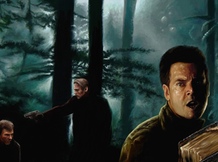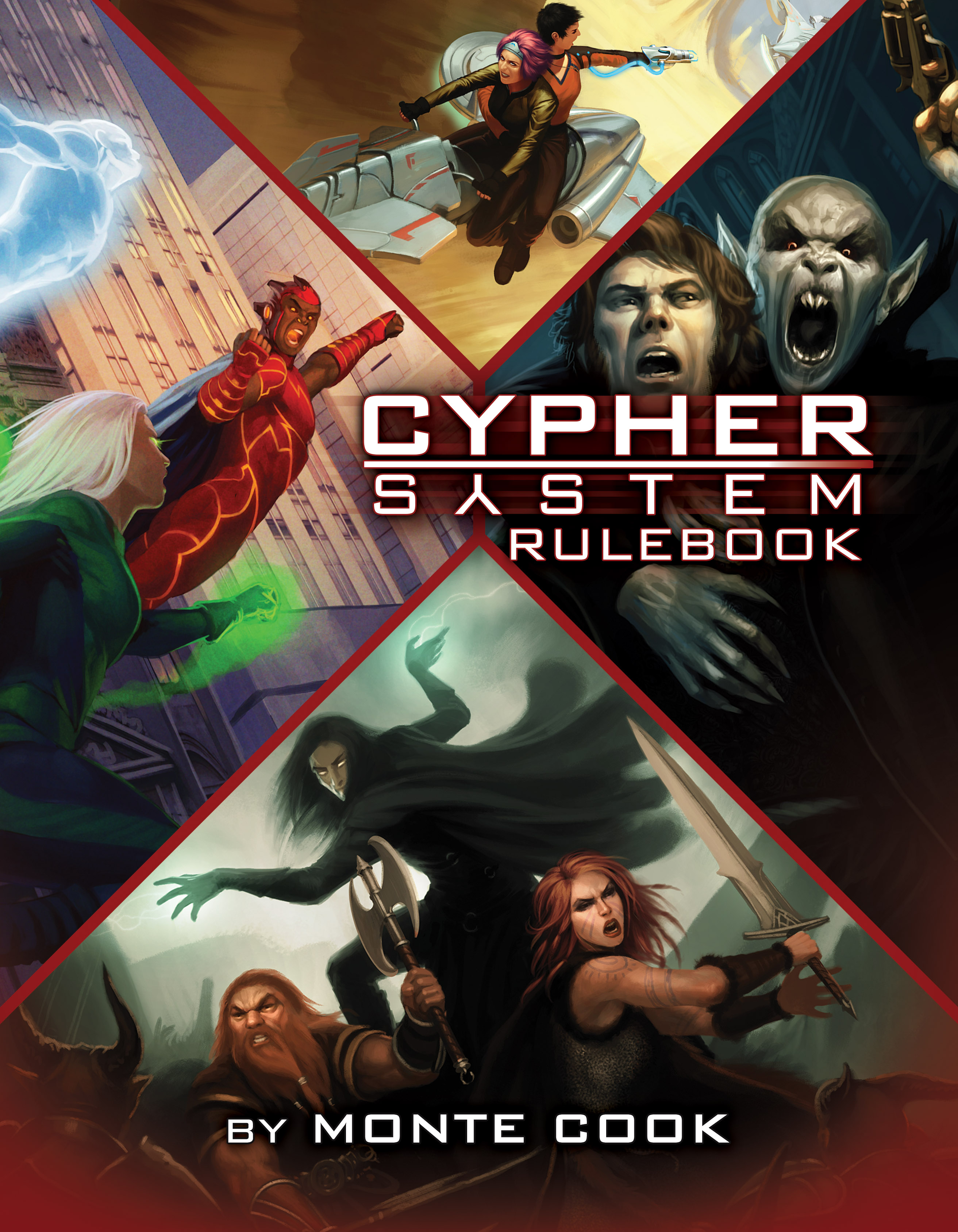
We are extremely grateful to Shane Ivey for taking time out of his schedule to answer some of the questions we had about Delta Green and the current Kickstarter campaign. TRF is a huge fan of Delta Green, and a lot of our material is inspired by the awesome conspiracy/mythos blend it presents. You can find the Kickstarter here! Also, we’re releasing a play through of the scenario Last Things Last on Sunday, so you can see how we deal with being tasked with a mission.
What led to Delta Green becoming a stand-alone RPG? What are some changes you are making to Call of Cthulhu to make the system work better for Delta Green?
Delta Green has always been a series of sourcebooks for Call of Cthulhu, and every one of the Delta Green developers have always loved Call of Cthulhu as their favorite game. But Delta Green has always emphasized things a little differently than Call of Cthulhu. It’s set in the present day. There’s not the same distance between the players and their characters as when modern-day gamers play 1920s academics and explorers.
Delta Green is about realistic people in our own modern world. Even when its protagonists are federal agents and special forces operators, they’re meant to feel and act like real people with real vulnerabilities. All too many of us personally know people who have been exposed to the terrible traumas of violence. We’ve seen the long-term toll it takes on the individual psyche and on family. Delta Green is a game about brave men and women who choose to confront overwhelming terror and trauma to keep it away from their loved ones. It was critically important to Delta Green’s developers that the game respect the real-world price that people pay for making that choice by reflecting it in the rules and game-play.
So Delta Green characters have Sanity Points and Hit Points, as you’d expect, but they also have other features that come into play in long-term games. Bonds are your two or three most important human relationships. They can protect you from losing Sanity Points and they can help you control yourself when your Sanity snaps, but relying on them too much weakens them. The shared traumas of a Delta Green mission often causes agents to develop new Bonds with each other, which in turn weakens their Bonds back home.
There’s an optional rule for tracking Work Performance, which could result in your agent getting fired for bringing too much baggage home from Delta Green missions, and which in turn can damage your Bonds. There’s an optional rule for detailing what kind of equipment and tools your agent can obtain. Trying to get too much too quickly can impact your Work Performance if it’s on the job or it can damage Bonds if you’re burning through your own money.
The core mechanics received some tweaking, too, to suit the way we want Delta Green to run.
Most actions revolve around skills that have percentile ratings, as before. But we encourage the GM to not bother having players roll dice for their skills at all unless the situation is a crisis or otherwise out of the agents’ control. In the slow investigative scenes that usually begin a mission, just look to the rating of a skill. Tell the player if the agent understands or finds what they’re looking for, or tell the player that they need someone with greater expertise. Leave the dice for events that SHOULD feel random, like using a skill in a crisis or interacting with unpredictable non-player characters. That way when your expert with a 65% skill fails the roll a third of the time, it makes sense. That was a terrible crisis — it would have been impressive to succeed at all!
We’ve tightened up the way combat works to make violence swift, brutal, suspenseful, and unforgiving, while leaving many core issues firmly in the hands of the GM to allow room for common sense at the table.
We’ve revised the way Sanity Points work, and the way characters develop mental disorders, to suit the way we want the game to run and to better reflect the way these disorders work in the real world. In Delta Green, an agent can gain a long-term disorder over a long period of time due to a slow accumulation of stresses and traumas. And sharp moments of overwhelming, immediate terror can cause a short-term loss of control as the “fight or flight” response kicks in.
We want the way things happen in the game world to feel like they would happen in the real world. That makes unnatural horrors have even greater impact.
Is there a threshold of success for the Kickstarter that could lead Arc Dream to think it viable to restart the Delta Green line beyond this project?
At this point (Friday afternoon, Oct. 23) we’re less than $300 away from hitting 600% of the goal that we set to relaunch the game line. So yeah, it’s launched. Just from this project’s fundraising we’ll publish:
-The Agent’s Handbook (the core rules for players without much information about the setting or the supernatural).
-The Case Officer’s Handbook (everything in the Agent’s Handbook plus tons of information about the setting, the supernatural, the Cthulhu Mythos, cults and factions, and customizing any or all of it to keep players guessing).
-A Game Moderator’s Screen with quickstart rulebook, sample characters, and a scenario.
-Impossible Landscapes (a campaign and sourcebook about Carcosa and the King in Yellow).
-Control Group (an introductory campaign built to bring newcomers into the game).
-More than a dozen downloads, including six scenarios.
-Conversions of nine scenarios written for earlier editions.
-And it looks like we’ll hit the next big stretch goal to unlock yet another big book, Deep State, which will detail the secret government programs and private-public partnerships that surround and bedevil Delta Green.
What we publish beyond those six books depends on how the game line performs over the next year or so. We have enough ideas to keep going for years as long as gamers stay with us.
Which of the proposed source books are you most excited to see released?
The Case Officer’s Handbook, though if the terminology matters it’s a core game book and not a sourcebook. It includes the rules engine that Greg, Dennis and I have been working on for years as well as great resources for building a Delta Green campaign as a world filled with secrets, so even the most die-hard, well-read player will always be surprised and frightened.
Of the sourcebooks proper, I personally most look forward to Deep State. That book will let us really dig into the core philosophical issues that have always been at the root of Delta Green: the risks and benefits of power and secrecy, and the ways we change as individuals and as a culture when we come to accept things that we once found abhorrent. Those issues are even more relevant today than in the Nineties when Delta Green first appeared.
How did you decide to add a Gumshoe version of Delta Green to this Kickstarter? Are you planning to continue a relationship with Pelgrane for Delta Green materials?
We know Simon Rogers and the Pelgrane crew very well. Kenneth Hite, author of Trail of Cthulhu and Night’s Black Agents, is one of the developers of Delta Green: The Role-Playing Game. Simon and Ken came to me with the idea of a Gumshoe version of some kind. I loved the idea and ran it by the Delta Green Partnership (the creators and owners of the Delta Green property: Dennis Detwiller, Adam Scott Glancy, and John Scott Tynes). There was immediate and unanimous enthusiasm. The rest was just hammering out details.
Pelgrane plans The Fall of Delta Green and if that does well a supplement to it, probably a scenario collection. We’ll see how things stand after those come out.
What do you think has lead to Delta Green’s enduring appeal?
A large part of it has always been the setting — the non-player characters that players encounter in the game. Delta Green has always featured factions and actors who are well-rounded and interesting. Even the clear villains are three-dimensional characters. You may not find their aims and methods sympathetic, but you can see why they make the choices they make. Even when that choice is to throw the rest of humanity on a bonfire for the sake of just a little more life.
Delta Green is about characters who feel real, in a world that feels real, encountering unreal cosmic horrors that are entirely beyond their capacity to understand or confront. It’s about player characters who stand up as long and bravely as they can in the face of the death that the universe wants to inflict on us all. Delta Green agents are incredible not because they’re so much more dangerous or lucky or bad-ass than everyone else, but because they are not any of those things — and yet they stand and fight.
That means Delta Green does not pull punches. It does not offer second chances. It doesn’t give your character any points to spend for plot immunity. If you step into the darkness, you take your chances. It is incredibly suspenseful and chilling.
Again, a huge thanks to Shane Ivey for his team, and all the people at Arc-Dream who are making it possible to get a chance to get this amazing product. There are tiers to get whatever you want, including, hardback books, PDFs, and releases of previous Arc-Dream materials. You can check out the Kickstarter, the website, or find Shane Ivey on Twitter. You can also find Delta Green @DeltaGreenRPG. Want to help spread the word and get more rewards? Look at some of the ways listed here! The campaign runs through October 29th, so get your pledge in while you can.
Don’t forget to listen to this Sunday’s episode to hear more about Delta Green!






 process of character creation through the selection of descriptor, type and focus: the adjective, noun and verb of the statement, “I am a ______ ______ who ______.” The Cypher System also adds a new concept – flavors. You can add a flavor to your type and get some new options for your character to pull from. The flavors include Technology, Magic, Combat, Stealth, and Skills/Knowledge. These let you customize your character a little more, like if you want a talk-y character who is also really good at punching people.
process of character creation through the selection of descriptor, type and focus: the adjective, noun and verb of the statement, “I am a ______ ______ who ______.” The Cypher System also adds a new concept – flavors. You can add a flavor to your type and get some new options for your character to pull from. The flavors include Technology, Magic, Combat, Stealth, and Skills/Knowledge. These let you customize your character a little more, like if you want a talk-y character who is also really good at punching people.





